The best camera drones in 2025: take your photography & video to the skies
These are the best camera drones for aerial photography and videography, both for cameras and flight controls
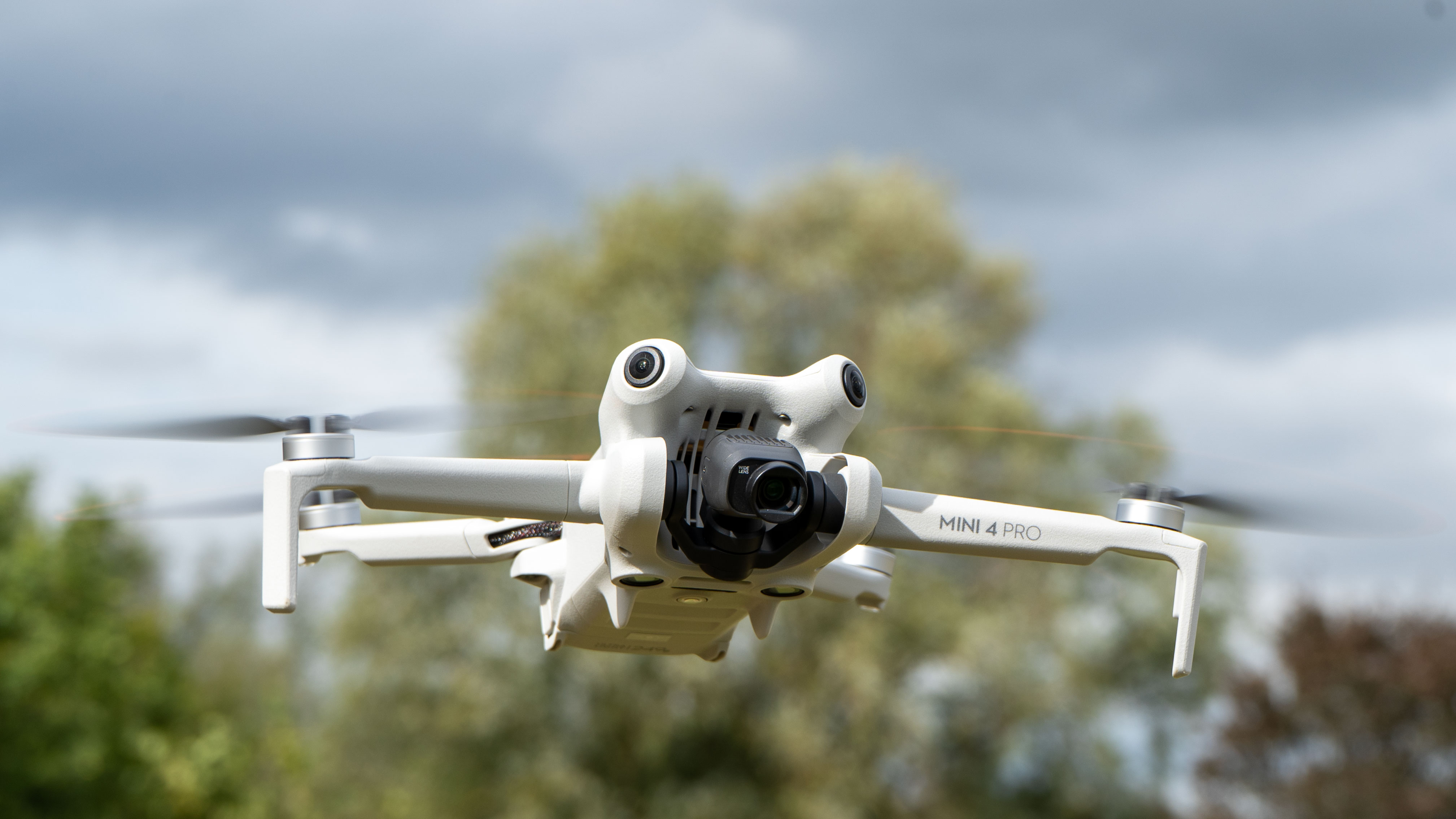
It's amazing to think that a few years ago camera drones were little more than novelty toys for gadget-heads; now they’re a creative tool few photographers or filmmakers want to go without.
There are choices for amateur and professional, offering a choice of creative angles and unique perspectives that simply wouldn’t be possible with any other camera. Of course, the possibilities have always been exciting – what makes it practical, and what is the right choice?
When we look at a camera drone, we're looking for the right balance of price, camera capability, and practicality. That last category is affected in most countries, including the UK and USA, by laws that make it easier to operate drones under 250g (0.55 pounds).
If you're looking for high-quality results, you'll need to look for larger image sensors and perhaps even the ability to record using cinema-grade codecs like ProRes. These can be hard for most people to work with though. More important are the essentials – a gimbal to keep the camera stable and a good battery life.
AI is also a key factor for shooting, with many drones having different levels of subject tracking that can greatly ease getting a good flowing shot, while safety is a factor bolstered by collision sensors, though these can come at a price.

Adam has been writing about tech for over two decades and has been building and flying drones – as a hobby and then professionally – for most of that time. He is not just our resident expert on all aspects of camera drones and drone photography, but the author of several books on the subject including bestsellers The Complete Guide to Drones and The Drone Pilot's Handbook.
The Quick List
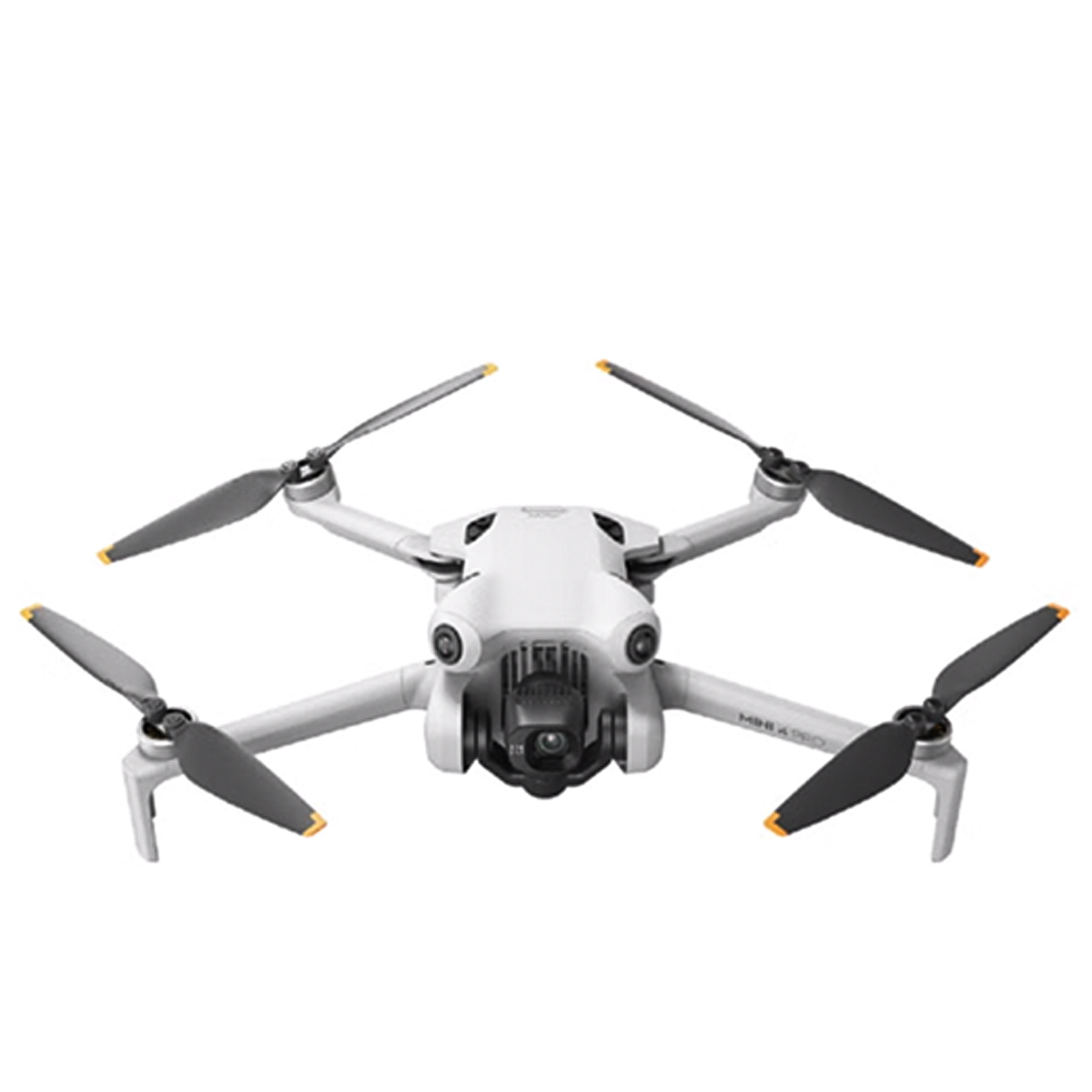
A high-spec camera in a drone small enough to be used safely (and legally) in most places makes this an ideal first drone and often the only one you'll ever need.
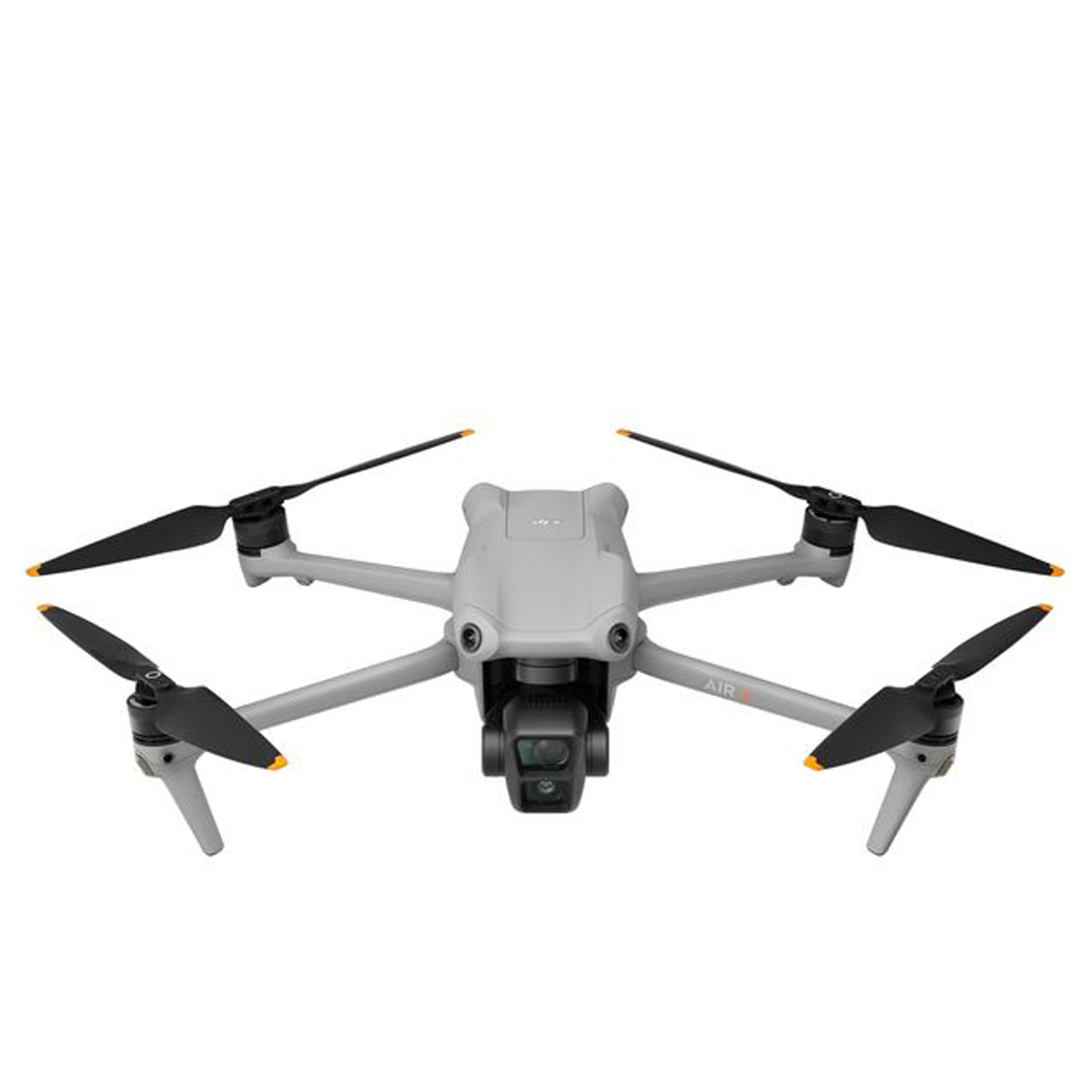
A still-compact 4K drone with two cameras (1x and 3x) makes this a good choice for serious imaging without breaking the bank or your back.
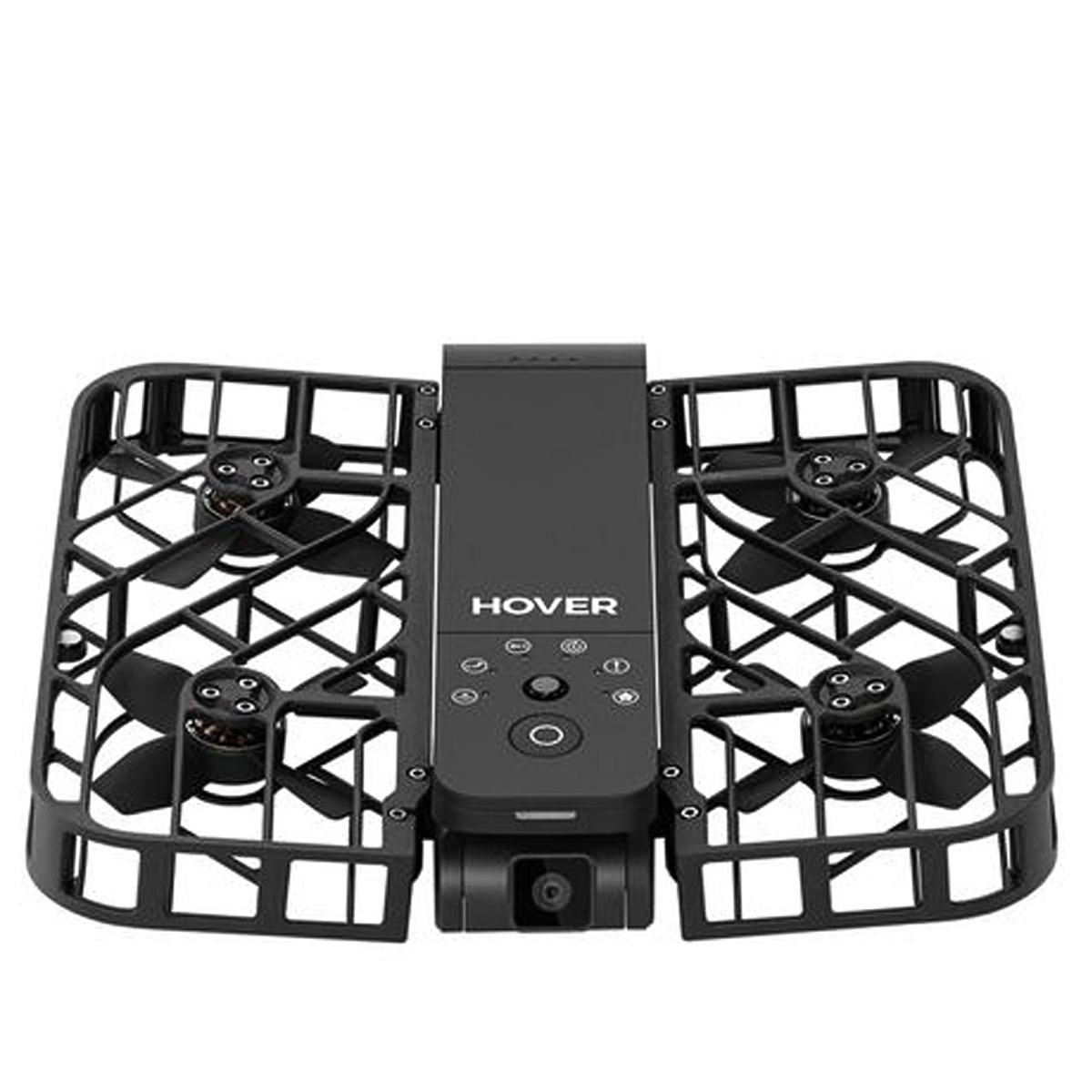
If you want a loyal folding drone smart enough to follow you without the effort of flying it, and that will land in the palm of your hand without risking hurting you this is the only choice.
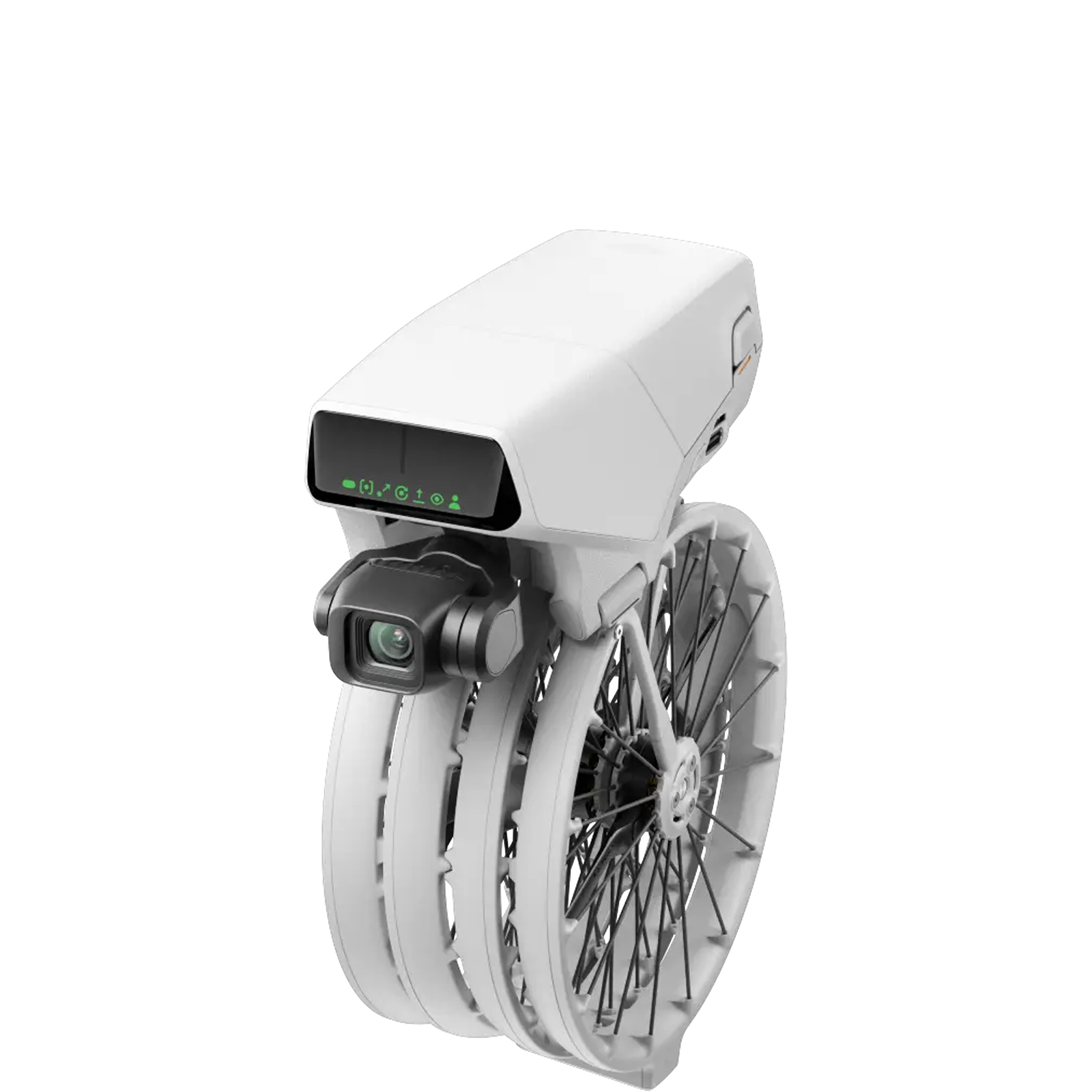
As a combination of camera quality, features, and rugged design (not to mention safety) it's hard to dispute the Flip's credentials; you can use it with the included remote, or let it fly from your palm using just AI!
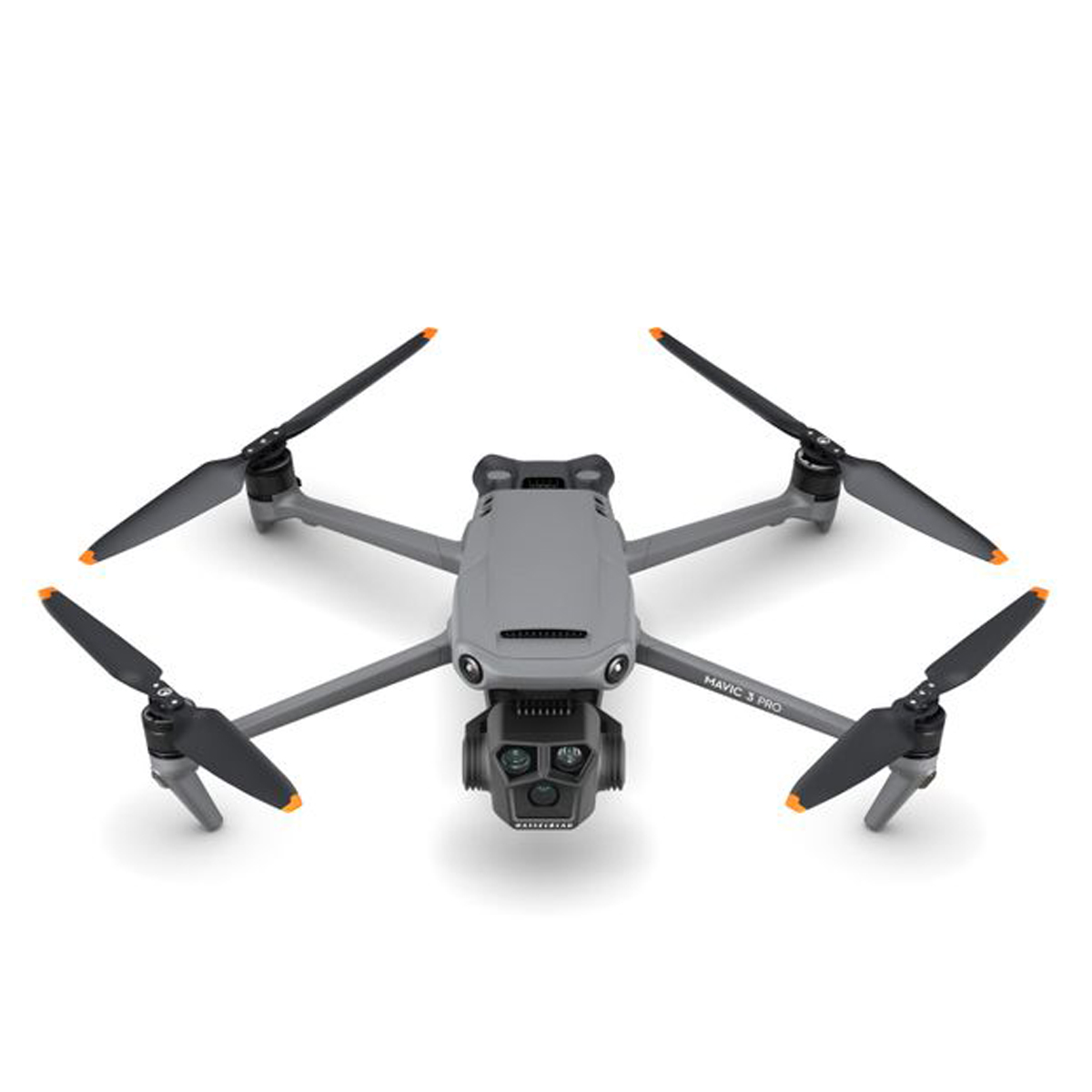
It's a flagship for a reason; micro-four-thirds main camera flanked by 3x and 7x zooms and powerful software.
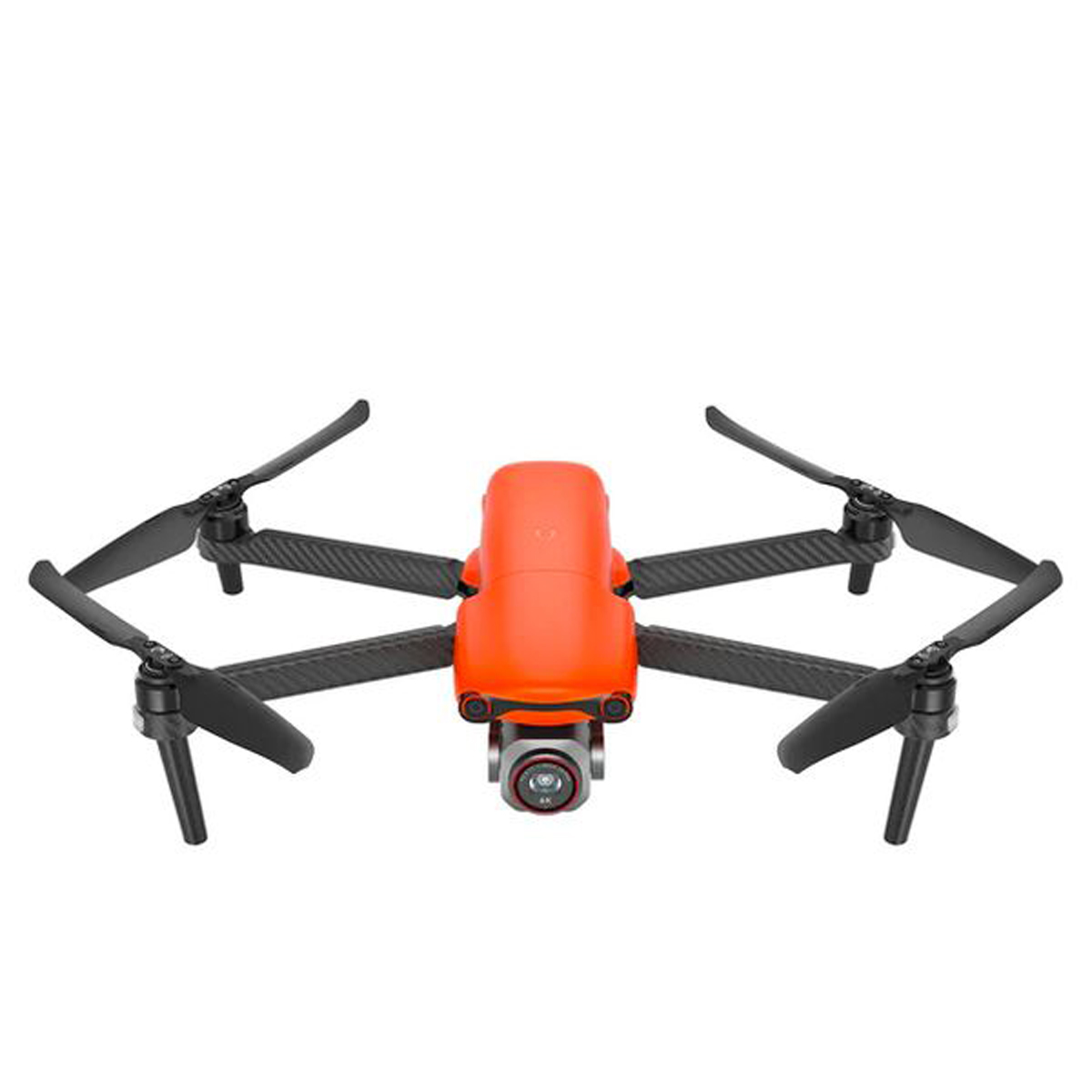
Autel's EVO Lite+ actually has some heft to it, and a camera with an adjustable aperture which can stay aloft a long time and get impressive RAW images or high-res video.
View the full list ⇩

Potensic has introduced a DJI Mini-killer with the Atom: it’s given its drone all the things DJI took away, including 4K video and subject tracking.
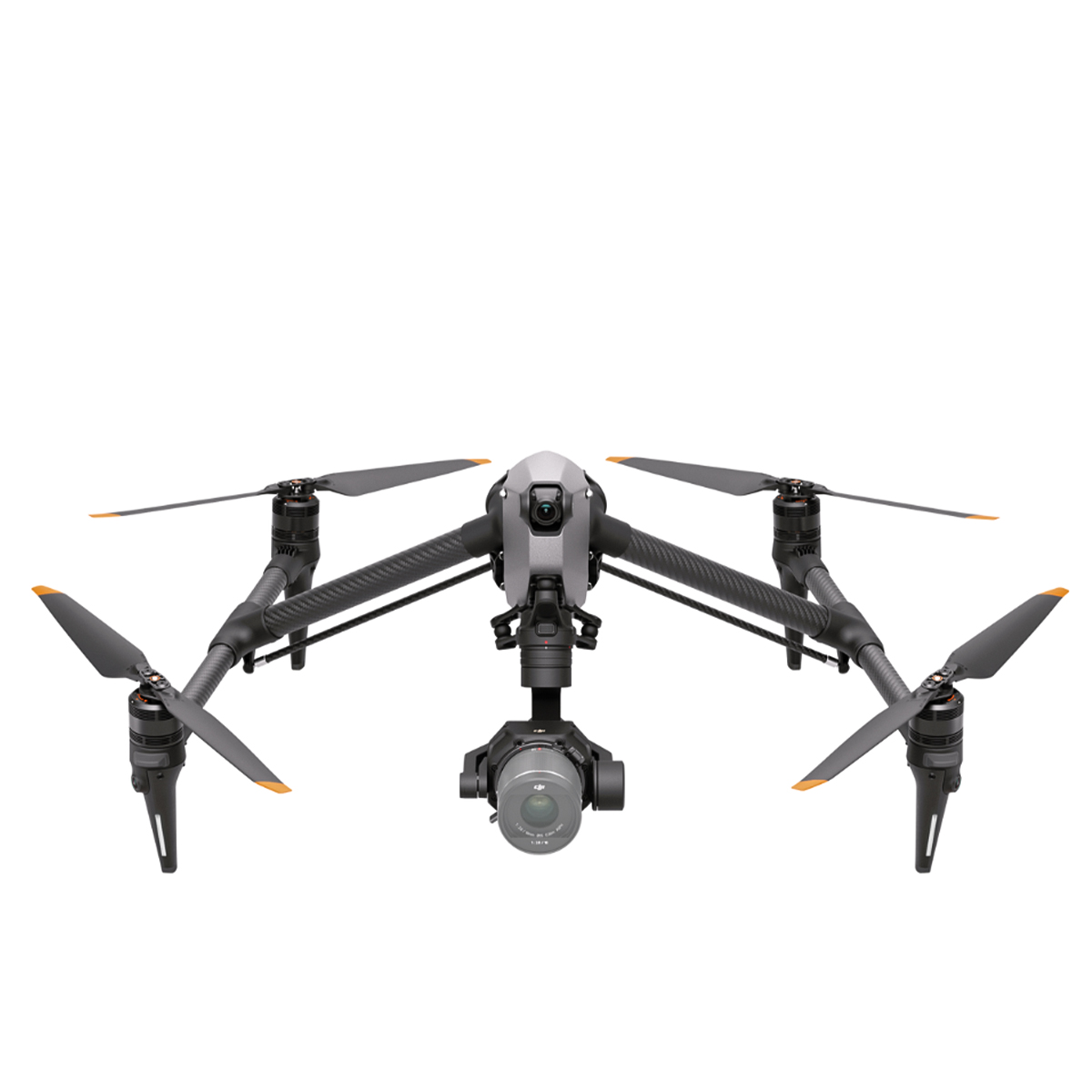
It's not cheap, but the interchangeable camera and interchangeable lens system, dual controller and dual battery system make this a precise tool for pros which can still be used by any drone pilot.
Read more below
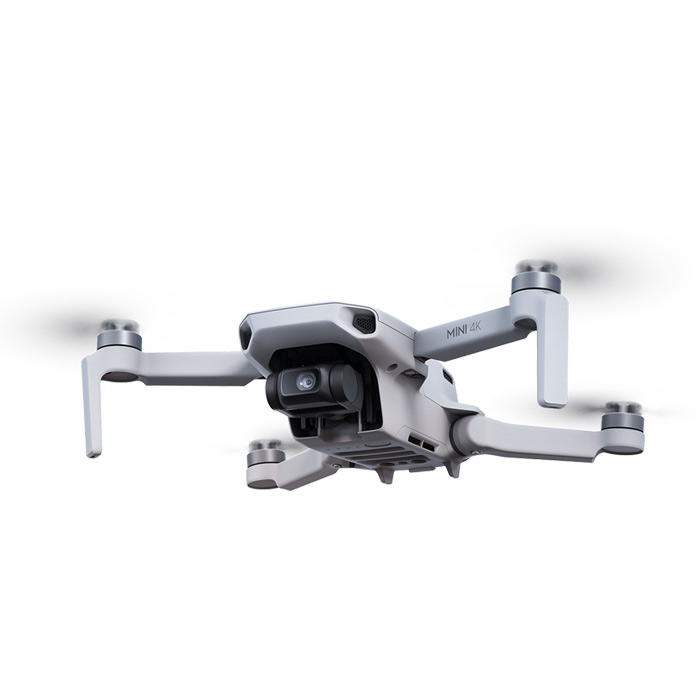
Coming in below the 250g limit for registration, this basic but highly capable model offers three-axis image stabilization, surprisingly good 4K video and easy-to-use software – all you need, and at a very reasonable price.
Read more below
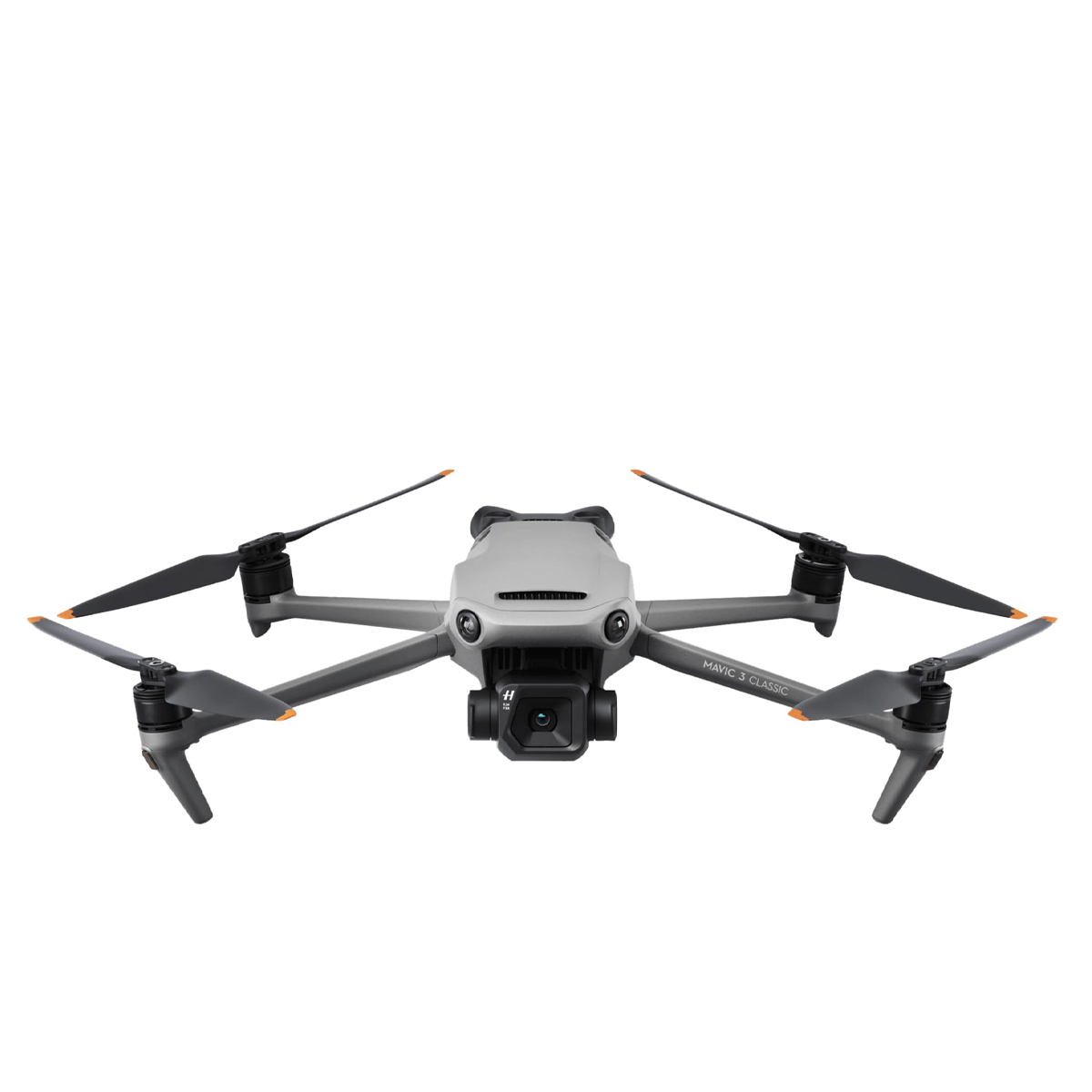
This stripped-back Mavic features just one camera – the 24mm lens that gives you a lovely wide view. That means you get Mavic supporting features, including a 15km range and long battery life, for less.
Read more below
Best camera drones
Why you can trust Digital Camera World
Best drone overall
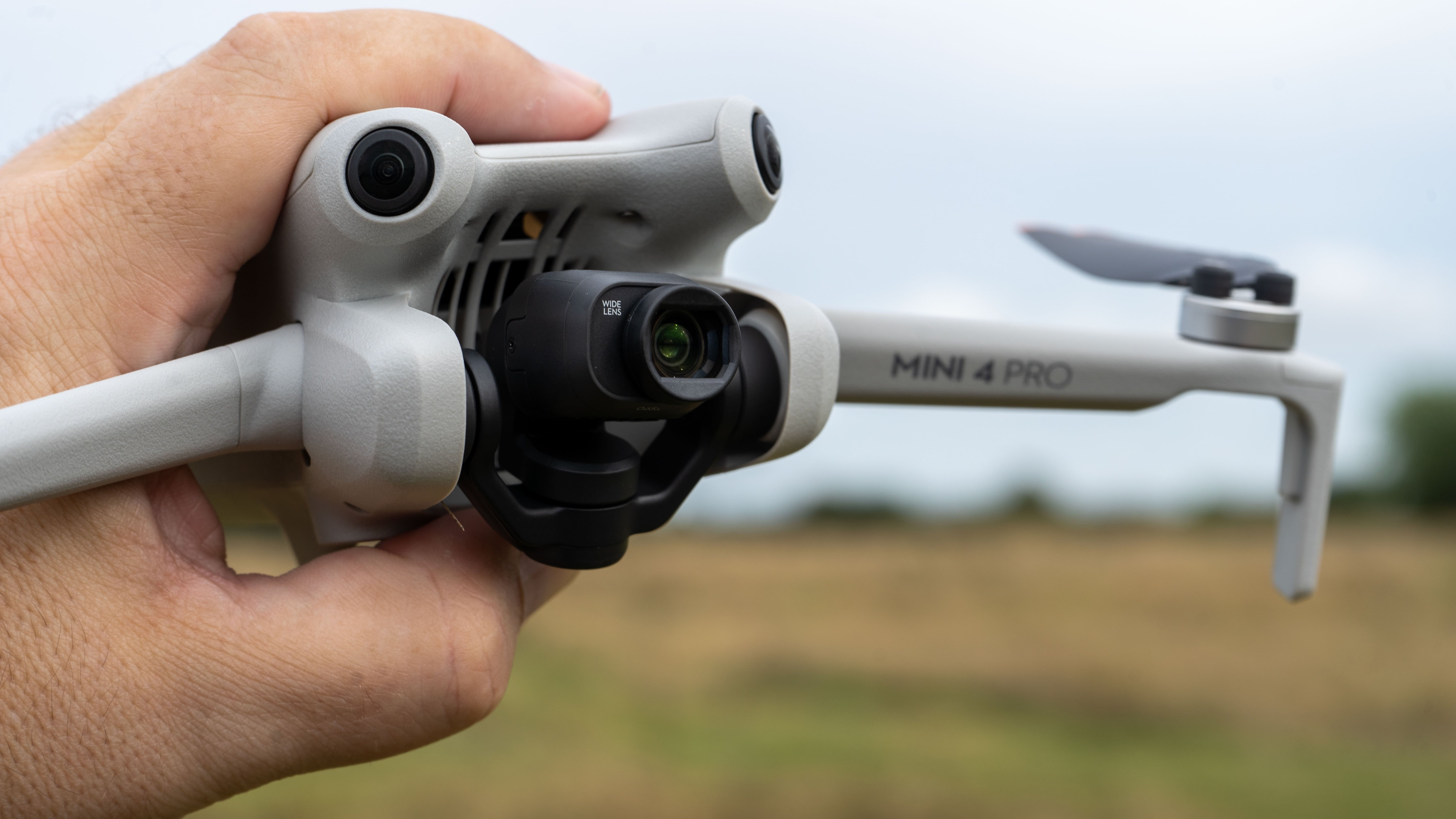

1. DJI Mini 4 Pro
Our expert review:
Specifications
Reasons to buy
Reasons to avoid
✅ You want the ultimate power under 250g: The weight limit has a big impact on where you can fly and this drone is the best equipped in the weight category.
✅ You want great range: The excellent range also means control is reliable at more normal distances.
❌ You're looking for the best value: There are a lot of features here, and you can get away with less while still capturing high-quality content.
❌ You want true telephoto: If you want to zoom, then only digital zoom is on offer with this drone.
This drone's predecessor, the DJI Mini 3 Pro, had a massive effect when it arrived in May 2022 – it redefined what DJI was doing with the ultra-light category, bringing some collision sensors and a 4K 60fps camera which could physically rotate to vertical mode (a feature still not equalled by much bigger craft).
Under 18 months later, the Mini 4 Pro finished the job, making the collision sensors omnidirectional (all-round) and adding 10-bit D-Log M video and waypoint programmable flights while keeping under the magic weight. It can also do HDR at a full 60fps rather than the 30fps limit of the Air 3 Pro.
The Mini 4 Pro also sports DJI's updated O4 radio system which offers up to 20km (over 12 miles) of theoretical range or, more importantly, top-notch reception in sensible operational distances. The updated DJI RC 2, as seen with the DJI Air 3, is an option, which feels very pro in hand, giving the choice of a model with a screen to save the (fairly minimal) fuss of connecting a phone). In some markets (start chanting "USA, USA...") there is also a choice of batteries if you don't mind pushing the weight limit, meaning you can go from the already decent 30 minutes to over 40 (again, always take these with a pinch of salt – it depends on conditions and flying style). You should note, though, that the drone will know about the weight change, and can alert authorities.
The message of the Mini 4 Pro is that DJI will not let the weight restriction prevent creatives from achieving their goals. The inevitable downside is the pricing, which is quite a lot closer to the company's higher-end models than other ultralights. If you want to save, there is the less-expensive DJI Mini 3, which lacks the collision sensors and some of the output options, but will capture similar video and stills for the average user.
Features | High resolution, 10-bit video, with rotating camera, mission planning | ★★★★★ |
Design | Efficient styling but simple to use | ★★★★★ |
Performance | Flawless performance within wind parameters | ★★★★★ |
Value | A good price for all the features, but there are cheaper ultralights if you can compromise | ★★★★ |
Read more: DJI Mini 4 Pro review
Best drone for flexibility
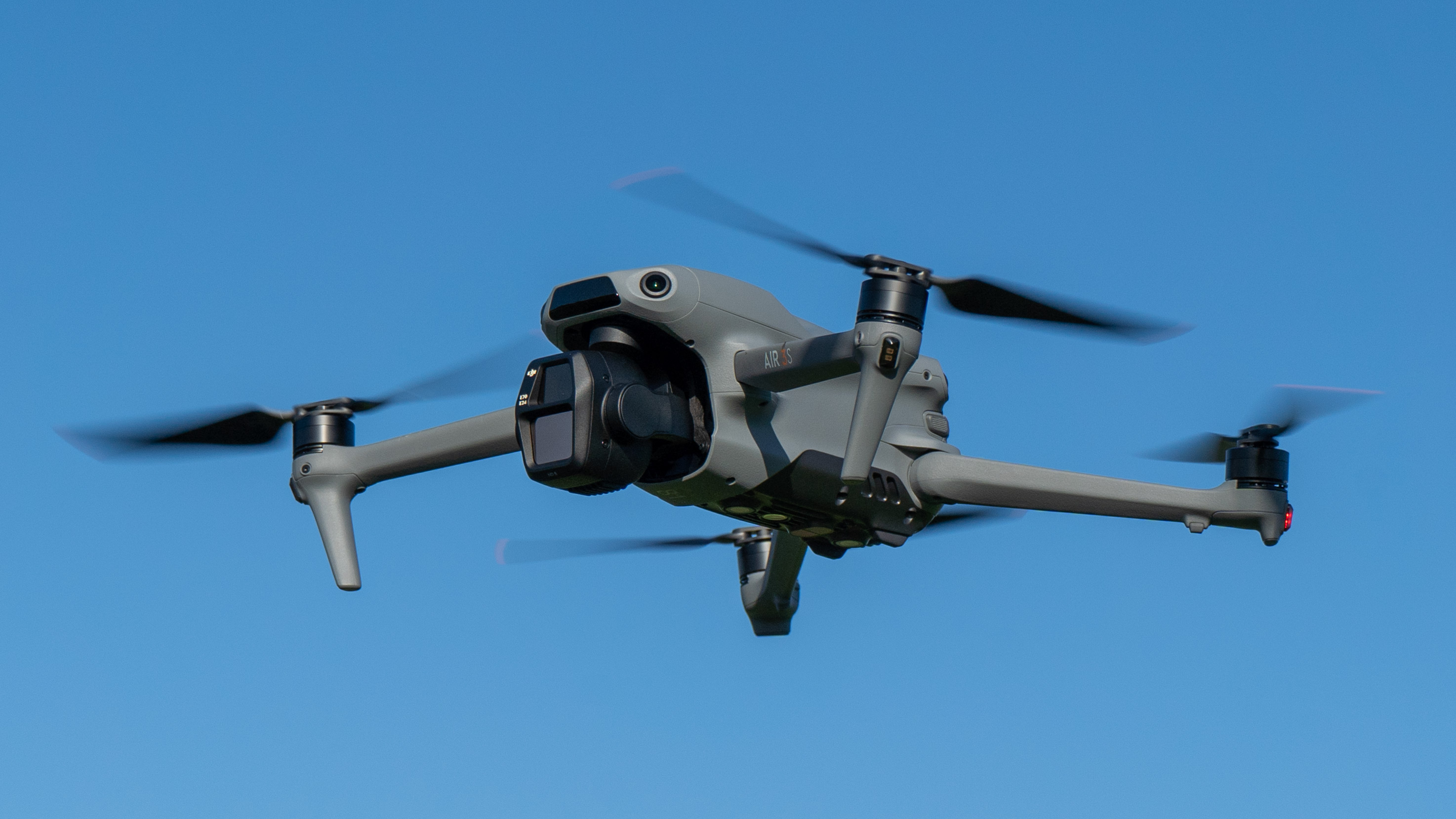
2. DJI Air 3S
Our expert review:
Specifications
Reasons to buy
Reasons to avoid
✅ You want a true telephoto: Digital zoom is one thing; the option to switch to a dedicated lens is another – the Air 3S gives you a tele at a price which isn't eye-watering.
✅ You want a great all-rounder: The drone balances features, a bit of extra size for stability, great range and performance against a sensible price.
❌ You want to stay under 250g: While the drone is relatively light and easily portable (earning it EU C1 certification), it is still 724g.
❌ You shot 5K video on the Air 2S: OK, this one is niche, but the old 2S – two generations ago – had 5K video (but no tele lens). Personally, I'd take two 4K 10-bit cameras every time!
The DJI Air 3S is more or less perfect. The only real problem is that, if you're based in America, it's not that easy to get hold of unless you order from DJI directly (which you can, no problem) – you might have to go for the older DJI Air 3. That's still a great drone, but...
The Air 3 brings a new, bigger 50-megapixel 1-inch sensor for the 'main' camera, which is 24mm EFL, and keeps a 48-megapixel 1/1.3-inch camera for the 70mm EFL f/2.8 tele lens. Compared to a typical one-camera drone this massively increases your creative capabilities – for example tracking people or moving subjects. It's also great for survey jobs with a bit more safety.
DJI have modernised everything and boosted convenience; the drone boasts 42GB of internal storage so if you forget a MicroSD card you're not in trouble. It skips around the air with impressive confidence, feeling a lot more assured than a 'Mini' sized drone (though, of course, it is nearly 3 times the weight). Low light is impressive,
Something that has been worrying in the past with different-sized sensors has been how the optics blend together, but this question seemed not to present itself in my tests. What I did notice was how impressive the dynamic range was, and the 100-12,800 ISO range is the tip of the iceberg; DJI has even added a new low-light collision sensing system with Lidar which makes crashing that bit harder (I didn't manage it in my testing).
Think of this as a more affordable Mavic 3 Pro which is also more modern and, in some ways, actually better! As well as eclipsing its bigger, heavier cousin with goodies like Lidar, it also gets AI subject tracking and even Waypoints, plus excellent battery life. Why spend more?
If you want to do occasional survey work, and perhaps get some images, then I found the 4x zoom looked very impressive and, honestly, this drone seems to aggressively eat into the use-case for the Mavic 3.
Read my full review of the Air 3S with sample clips
(If you're looking to buy in the USA, I recommend the DJI store; if you need to buy from Amazon, then you'll have to choose the Air 3 – check my review)
Features | Dual camera system, waypoints, >40 flight time, and new collision sensors that work in the dark | ★★★★★ |
Design | Excellent cameras and capable of shooting 10-bit video and D-Log M | ★★★★★ |
Performance | DJI say there is 14 stops of dynamic range and I certainly felt like it | ★★★★★ |
Value | This doesn't seem a lot more than the Mini 4 Pro for much better tech; well worth doing an online test for! | ★★★★★ |
Read more: DJI Air 3 review
Best follow-me drone
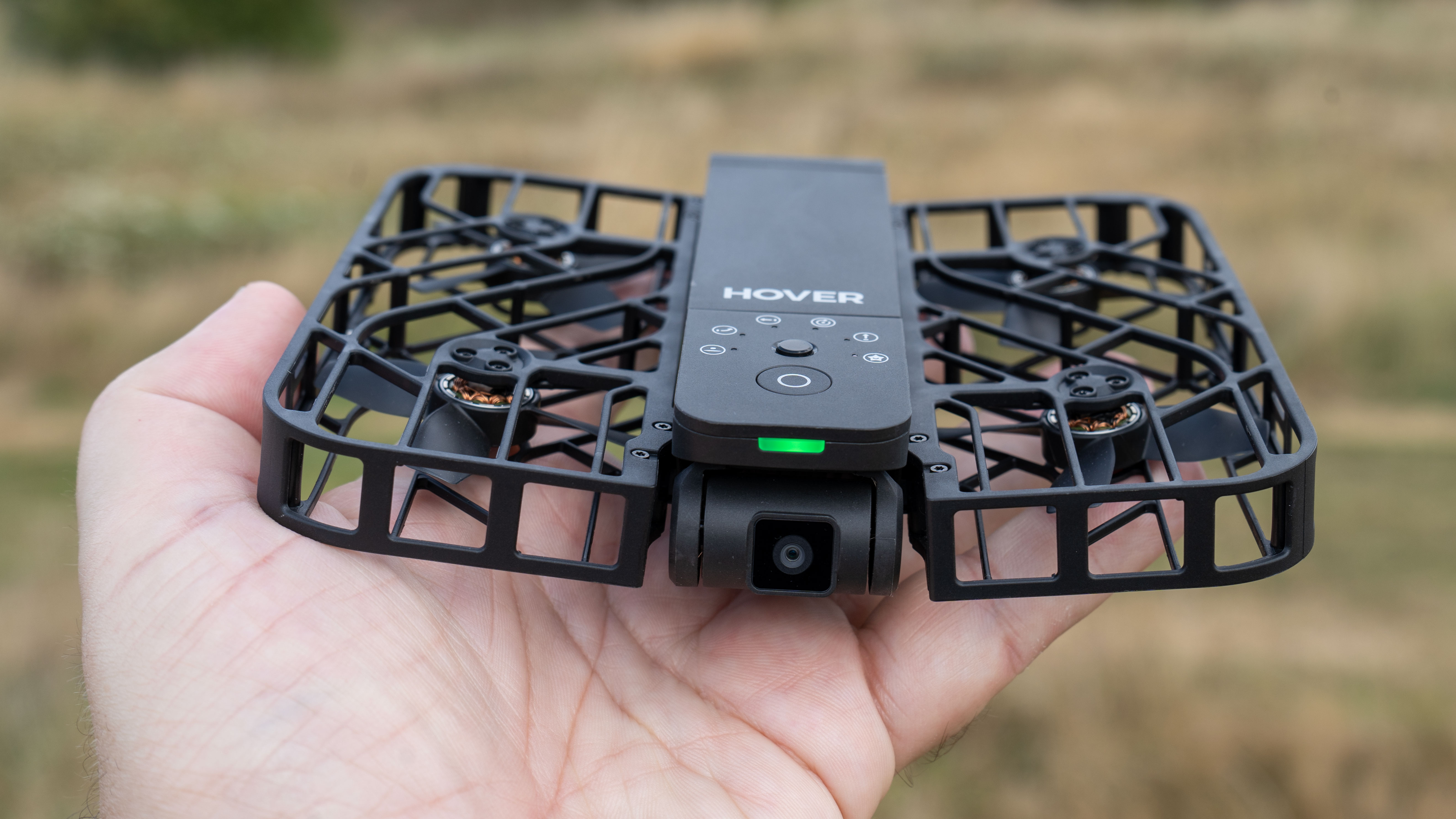
3. HoverAir X1
Our expert review:
Specifications
Reasons to buy
Reasons to avoid
✅ You want a drone that can fly itself: The HoverAir X1 is designed to follow you using AI, and it does its job very well.
✅ You're looking for something fun: The genius of the X1 is how safe it is and how little effort it is to fly; even a phone as controller is optional.
❌ You're expecting a high workload: The drone can only record to its in-built 32GB storage; no memory cards.
❌ You want 4K video: The drone maxes out at 2.7K, more than good enough for sharing but perhaps not exactly broadcast quality.
This might not be ideal for younger kids without a bit of parental supervision, and it's certainly not the cheapest toy, but it's not too pricy either compared to many on this list and it does offer a very different take on drones that I found very compelling. It's one I've added to my collection, and it's one I find the whole family can enjoy.
When I first tried it, this drone surprised me with its sensibly safe design, and by how the AI could simply follow me, taking off and landing on my own hand. After initial set up, I didn't even need my phone to do it – there is a combination of a speaker inside so voices reassure you that you've asked for the right thing and simple buttons on the frame.
Think of it as an angel on your shoulder which can be passed between family members and follow them running, cycling, or undertaking any activity. An unusual drone, but amazing.
Choosing this drone does involve making a slight compromise when it comes to flight time and range; you can choose to fly it with your phone (wi-fi range) or just let the drone do the flying, but the resolution and flight time doesn't match even most ultralights. That said, it's not only cheaper and smarter but the caged propellors are notably safer than other drones.
NOTE: The new DJI Neo is seriously competitive against this drone in terms of specs and battery life. I've tried both and written my thoughts on whether I'd still buy the HoverAir X1 or the DJI Neo in this category, and as the firmware evolves you can bet I'll be keeping my attention on this.
Features | Subject tracking and remote-less operation | ★★★★★ |
Design | Ultra-light folding cage | ★★★★★ |
Performance | AI tracking great, though battery could be longer | ★★★★ |
Value | Something of a matter of opinion | ★★★★ |
Read more: HoverAir X1 review
Best-value drone
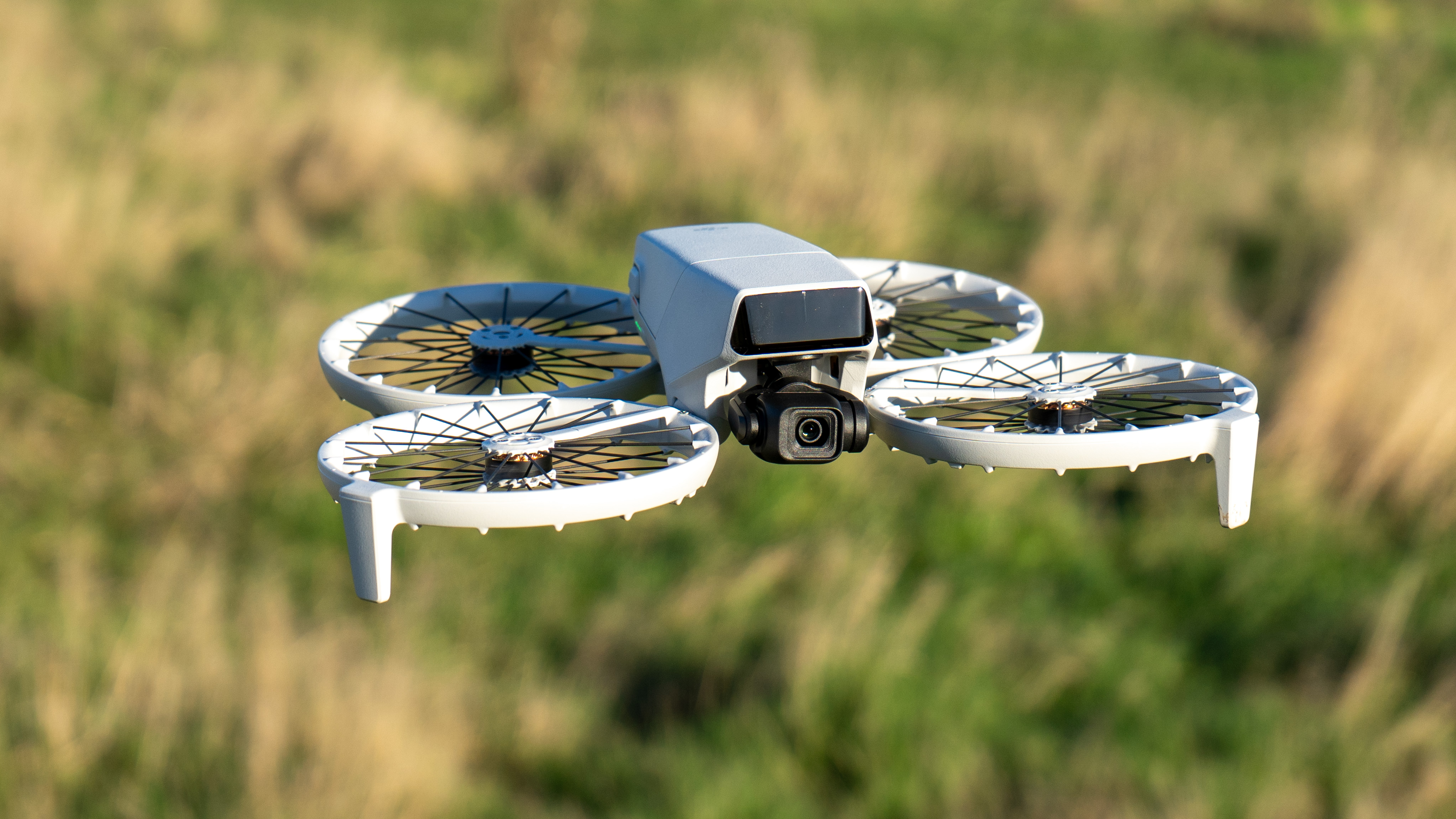
4. DJI Flip
Our expert review:
Specifications
Reasons to buy
Reasons to avoid
✅ You want a 4K ultralight: This might be all the drone you ever need; it can capture 4K video from a 48-megapixel image sensor while staying under the 250g threshold.
✅ You're balancing quality and convinence: It's not too pricey, yet it has safety frames built-in – you can even hand-launch it easily and use AI follow if you like!
❌ You want collision sensors: It doesn't have all-round collision sensors (though it'll hit a tree ten meters up and be just fine – I know, my son has tried!)
❌ You want a true vertical format camera: Unlike the Mini 4 Pro camera, you cannot rotate the camera, only get cropped vertical video.
To some extent, drone design has been defined by DJI's efforts in 2016, but, nearly a decade of, this represents a markedly new direction. The lightweight spoke-based propellor cages might look a little ungainly, but make for a clever rugged folding design which is surprisingly pocketable, and seems to bring very little by way of flight time compromise – it's still around half an hour.
Safety isn't exciting to many on its own, but it does mean that hand-launching can become the norm. DJI has taken the opportunity to load this drone with the AI tracking features that mean you don't actually need a remote control for it to see you and follow you – making it, for want of a better term, a 'selfie drone'.
In the box, however, is a remote controller. Depending on your choice, you can either have the plug-your-phone-in type or a built-in screen but, either way, DJI aren't letting you buy this powerful drone without the option to fly it 'properly' (should I say 'traditionally'), and make full use of the camera.
As well as a 3-axis gimbal for the camera which seemed able to keep up with the drone's movements in my tests (some in gusty wind), the drone has some nice modern touches, like some onboard storage (2GB there in case you forget your memory card).
In terms of complaints, I do feel like the enclosed props are a little noisier than the alternative (or the pitch more irksome), but that's such a minor irritation in exchange for the convenience of hand-launching anywhere without worrying about fingers. It really is easy enough to use that my 8-year-old had no issues with it, so I can see why DJI see it as a vlogging drone for everyone.
Features | A camera capable of 4K at 100fps, AI tracking if you choose, and a RAW capable camera. | ★★★★★ |
Design | Some might see it as an ugly ducking, but in this case different is revolutionary, convenient and powerful. | ★★★★★ |
Performance | The camera keeps pace with others from DJI, and my only real reservation was that the frame is (very slightly) less able to cope with gusty wind than | ★★★★☆ |
Value | The DJI Mini 4K offers decent video and RAW images for a lower cost of entry, but this is better and the value proposition is also enhanced by the AI tracking – I admit it's a personal view. | ★★★★★ |
Read more: DJI Flip review
Best premium drone
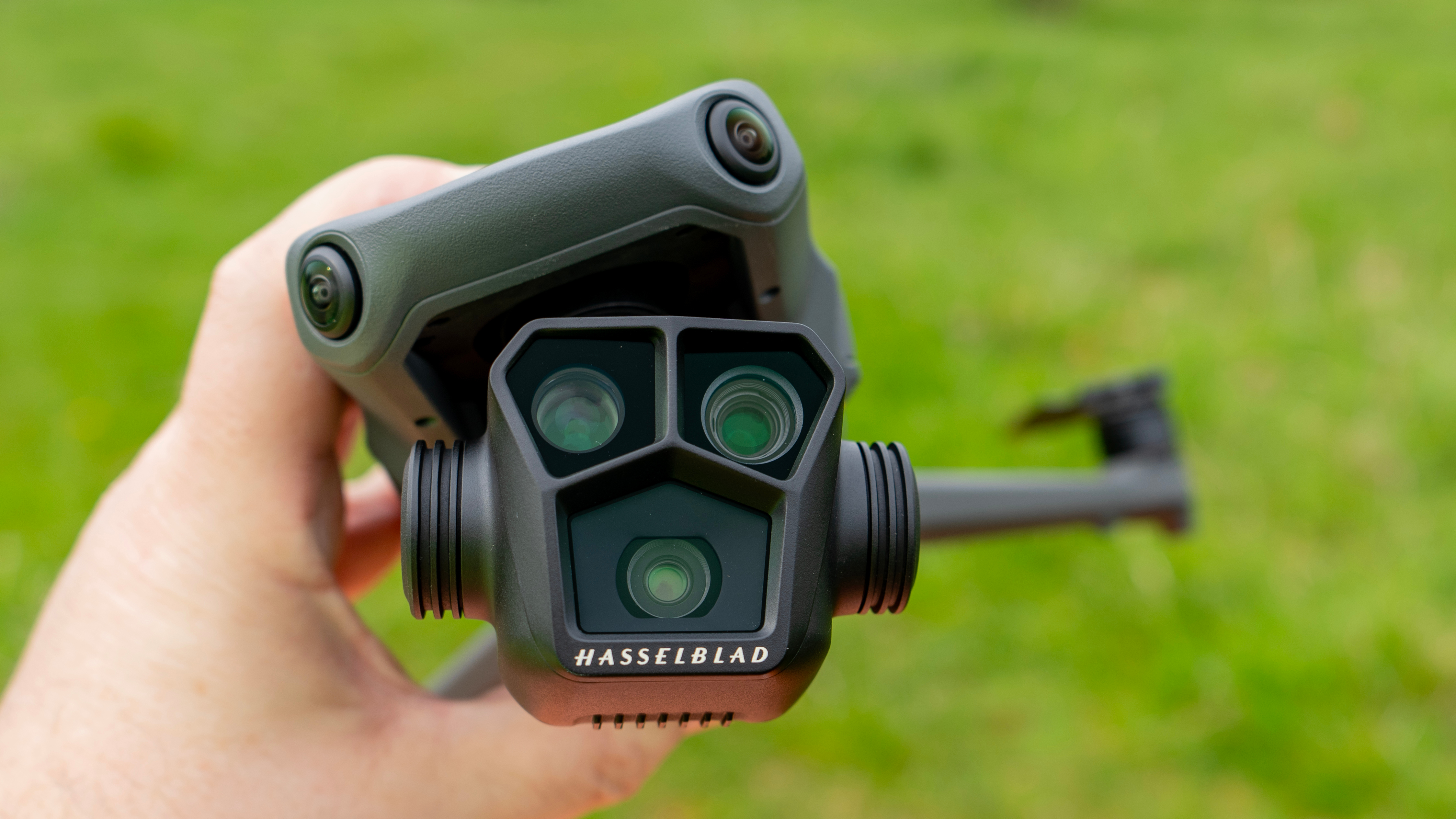
5. DJI Mavic 3 Pro / Pro Cine
Our expert review:
Specifications
Reasons to buy
Reasons to avoid
✅ You want triple-camera power: The power afforded by the zoom cameras gives serious pros options even where airspace restrictions can hamper them.
✅ You want all the features DJI offers: This is a flagship, so you'll find all-round collision sensors, subject tracking and mission planning.
❌ You just want one MFT camera: DJI has catered for you with a Mavic 3 Classic; that still gives you the excellent Hasselblad camera, but leaves a smaller hole in your wallet.
❌ You don't need survey-level zoom: The 7x zoom might not be what you're hoping for; seriously look at the Air 3 as a money-saving alternative.
The Mavic 3 Pro is a powerful machine, capable of lifting a triple-camera system based around a 24mm EFL main camera and two secondary cameras (at 70mm EFL and 166mm EFL) that serve to provide a “hybrid zoom.” If the approach hadn't already been adopted – almost certainly – by your phone it might seem a bit confusing and it is a little strange at first but the excellent 20-megapixel main camera
brings the pro features of adjustable ISO, exposure, and, crucially, aperture.
The secondary cameras are less impressive, but they still represent a notable improvement over the original Mavic 3's dual camera system. The Medium Tele is f/2.8 and the tele ƒ/3.4 so you'll get the best imagery from the 'Hasselblad' (main camera – and ProRes video with the Cine option – but the other cameras don't give you the same camera system (unlike, say, the swappable Inspire 3). You can opt to switch between lenses, or have the computer create a long digital zoom (again, like a phone), all the way to 28x, though you'll see the jumps at 3x and 7x (again, like a phone).
If you own an iPhone 15 Pro or 16 Pro you'll understand what it's like to have a 3-lens camera and the worst sensor on the telephoto lens. It's still better than not having one but, inevitably, it occasionally makes you want for more!
Nevertheless, the Mavic 3 will do the job in a lot of situations, and it can do it for much longer too; hovering for up to 43 minutes, which means it can cover over 15 miles in a flight – not too shabby for survey missions either. Some might see the folding form factor as belonging to consumer territory, but that’s an old-fashioned perspective in the drone world and amongst clients; this is an aerial camera that (while being over most weight limits) is more portable than most and certainly priced for professionals.
The Mavic 3 Pro Cine is a variant exclusively for those requiring ProRes 422 HQ format video which also holds onboard a 1TB SSD to store the uncompressed video it can capture, and ships with the DJI RC Pro, a controller with a built-in screen. The video needs to be downloaded directly from the drone as the SSD is fixed.
Features | Across the Pro & Cine models is a lot of choice | ★★★★★ |
Design | Excess is kept to a minimum despite a MFT main camera | ★★★★★ |
Performance | Powerful machine and impressive battery | ★★★★★ |
Value | The Cine variant with on-board 1TB is pricey | ★★★★ |
Read more: DJI Mavic 3 Pro review
Best drone for creative control

6. Autel EVO Lite+
Our expert review:
Specifications
Reasons to buy
Reasons to avoid
✅ You want aperture control: With so many drones having fixed aperture, including this drone's obvious competitor the Air 3, the ƒ/2.8-ƒ/11 aperture is a feature that offers a point of differnce.
✅ You want to capture video over 5K: Some editors prefer to crop from 5.4K video, and the EVO Lite+ makes that possible.
❌ You love wide-angle footage: The lens is 29mm, which some people may feel is too narrow for their tastes.
❌ You want superior subject following: The following system in the EVO Lite+ is not quite up there with the DJI Mavic series.
Looking at the word of drones it's easy to think there is only one contender, DJI, but the EVO Lite+ shows that another company can approach things in quite a different way and the result is a drone that, for a good few photo and video enthusiasts, is probably the right choice, especially now that it's price has settled a little since launch.
Despite the name, the EVO Lite+ is not Autel's most lightweight offering – that is the Nano, which is their contender against the DJI Mini 3. It's better thought of as a smaller version of their main EVO drone (If the naming seems weird, it helps to remember that the Mavic and EVO, at about 900g, came first and a lot of drone companies still think of the 'about 900g' as the normal size and everything smaller as the difficult miniature offerings in part forced on them by regulators!)
Anyway, as I said, the EVO Lite and Lite+ (for there are two choices with different cameras) are reasonably meaty drones with a choice of colors and reassuringly sprung arms that make quick setup in the field a breeze. The standard controller seems very console-inspired, but that wasn't actually an issue for me, instead makes it comfortable.
I like to think of this as a drone for folk who believe a little more in specs than digital solutions. The new DJI Air 3 abandoned the 1-inch sensor, but this drone (at least the Lite+ edition) offers it, with lovely big 2.4um pixels, and 5.4K video has its uses. The camera also has a 29mm EFL lens which is a matter of taste, but not as wide angle as most drone cameras.
Admittedly 10-bit video would be better than just a flat profile, and the subject following is a little more limited than DJI's, but low-light performance is excellent and I love the fact I can tweak all the settings.
Features | Good resolution, although it lacks the dual-camera system of the Air 3 | ★★★★ |
Design | Not 'light' but easy to travel with | ★★★★ |
Performance | Decent battery, impressive camera and night modes | ★★★★★ |
Value | The price is very appealing if you want creative control | ★★★★ |
Read more: Autel EVO Lite+ review
Best budget drone
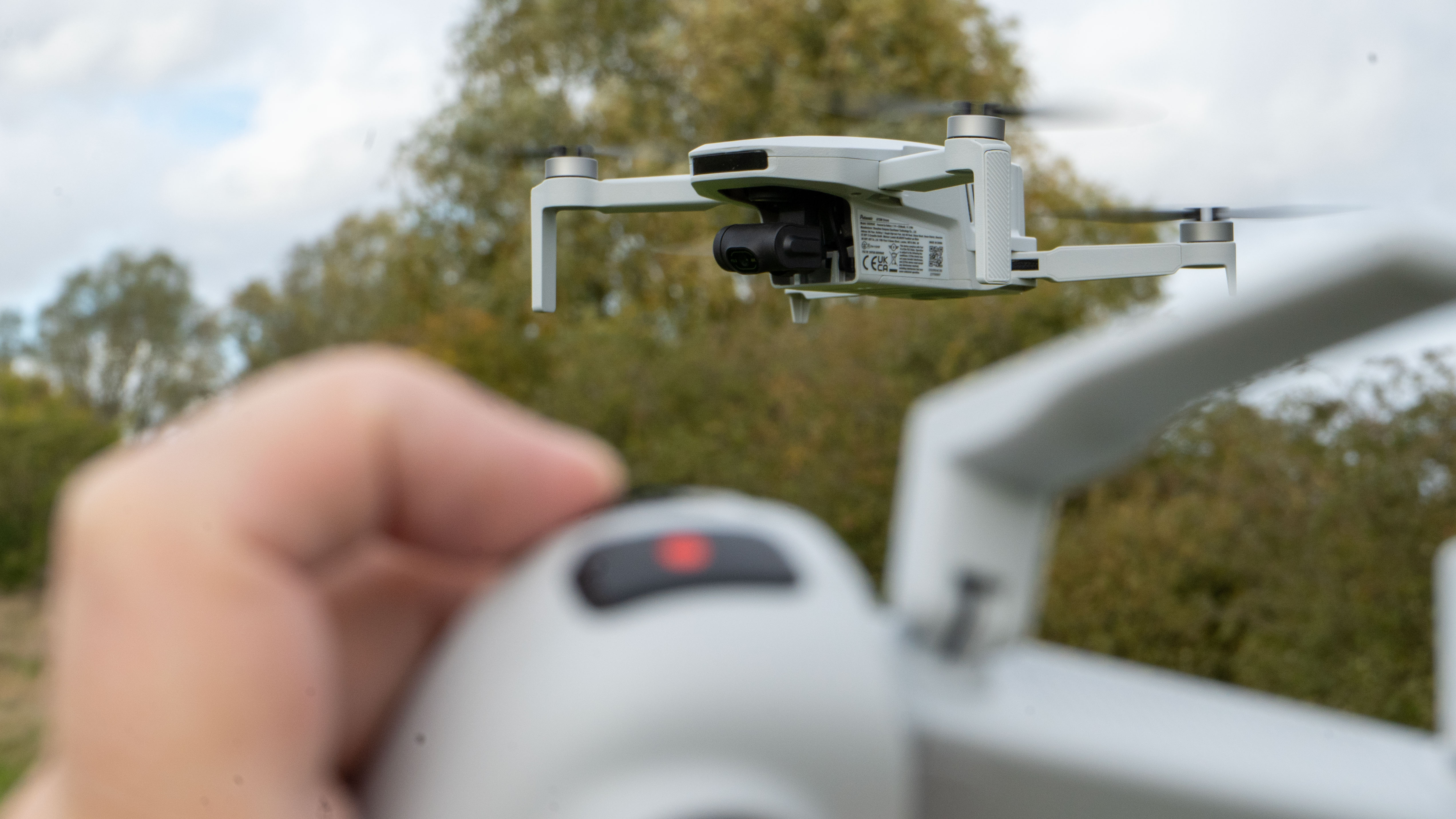
7. Potensic Atom
Our expert review:
Specifications
Reasons to buy
Reasons to avoid
✅ 4K stable video on a budget: This isn't a pricey drone, but it has a 3-axis gimbal, like all good camera drones.
✅ You want a lot of features: If you want access to the kinds of features DJI puts on its mid & high-range drones, but want to pay entry-level prices, this is the drone for you.
❌ You want an established pro brand: Potensic has been around a while, but it’s generally been a little more consumer-focused.
❌ You want to use filters: There doesn't seem to be the option to fit an ND filter.
Potensic has been making drones for quite a while, but until recently hasn't really worried the market leaders. Until the Atom, its strategy seems to have revolved around getting products out for the family fun / toy market. The Atom, though, really caught me by surprise when I tried it.
On opening the very elegant box, I discovered a drone with a build quality and styling that seemed to owe a fair bit to the DJI Mini 2 (and all the drones DJI have based on that airframe, including the current Mini 4K).
So, with DJI standing still on airframes in this category (though innovating with the DJI Neo), the Atom actually gave itself a lead by arriving at a point when DJI hadn't decided to offer 4K video in their cheapest drone. That has now, finally, been corrected with the Mini 4K (probably because of this Potensic). DJI, though, still have a relatively restrictive feature set on their entry-level drone. There is no option for waypoint mission planning, for example, so a geekier mindset might find the Potensic offers more.
DJI, I think, worry that some aren't to be trusted with this tech and, as a bigger brand facing a lot of legal challenges, are cautious about the features they make widely available.
There are no such limitations on the Atom, which also has a very clever controller design. It accommodates a phone in an extendable body design – even my iPhone Pro Max in a case, the result looks a bit like a Nintendo Switch when in use. The app is good, and the drone's batteries charge either via individual USB-C socket or (if you get a Fly More Kit) using a charging hub.
It feels like Potensic has taken everything it has learned, as well as a good look at what's around there, and successfully moved upmarket without pulling its prices all the way up too. That's a very tempting choice. On the strength of this, I don't see it being an economy brand for long.
Features | 4K camera, extensive app features including subject tracking | ★★★★★ |
Design | Styling folding airframe, clever controller, decent app | ★★★★ |
Performance | Sharp video, effective 3-axis gimbal | ★★★★★ |
Value | Great prices, especially in the Fly More kit | ★★★★★ |
Read more: Potensic Atom review (or the cheaper, non-stabilized Atom SE review)
Best drone for cinema

8. DJI Inspire 3
Our expert review:
Specifications
Reasons to buy
Reasons to avoid
✅ You want to use interchangeable lenses: Despite the price, this is still one of the cheaper and easier ways to do that.
✅ You need reliable broadcast-quality output: The Inspire series is established.
❌ You just need good video: Nine times out of ten you can get what you need with a Mavic 3. There was a time people bought the Inspire 1 because it was cool; things are different now.
❌ You are regularly working alone: Although you can pilot the Inspire 3 alone, it can do more with a crew.
The Inspire 3, with the required accessories, will set you back the same amount of money as a small car, but for the cinematographers it is aimed at, it'll be worth it. It could even save a bit compared to jibs and dollys, though it does have a bit more downdraft! The accuracy of repeatable routes can be centimeter-level thanks to built-in RTK compatibility.
As for cameras, the detachable unit has its own name: the Zenmuse X9-8K Air camera. Perhaps more will come later? It can rotate 360 degrees beneath the drone's airframe, and can be operated by one pilot – with the assistance of AI subject framing if they choose – or a pilot and one or two camera operators.
This is serious professional stuff, which will only record to DJI's own costly SSD cards (the same as used with its Ronin cinema cameras). Editing will require crunching a lot of numbers, but the results are spectacular, and the dual-native ISO full-frame imaging sensor certainly gets the results you'd expect for the investment.
Read more: DJI Inspire 3 Review
Features | Interchangeable lens, optional RTK positioning | ★★★★★ |
Design | Gorgeous, though delicate in places | ★★★★ |
Performance | Fast, powerful, though battery life could be better | ★★★★ |
Value | This is very expensive, although production costs are lower than many pro setups despite dual batteries | ★★★★ |
Best cheap DJI drone
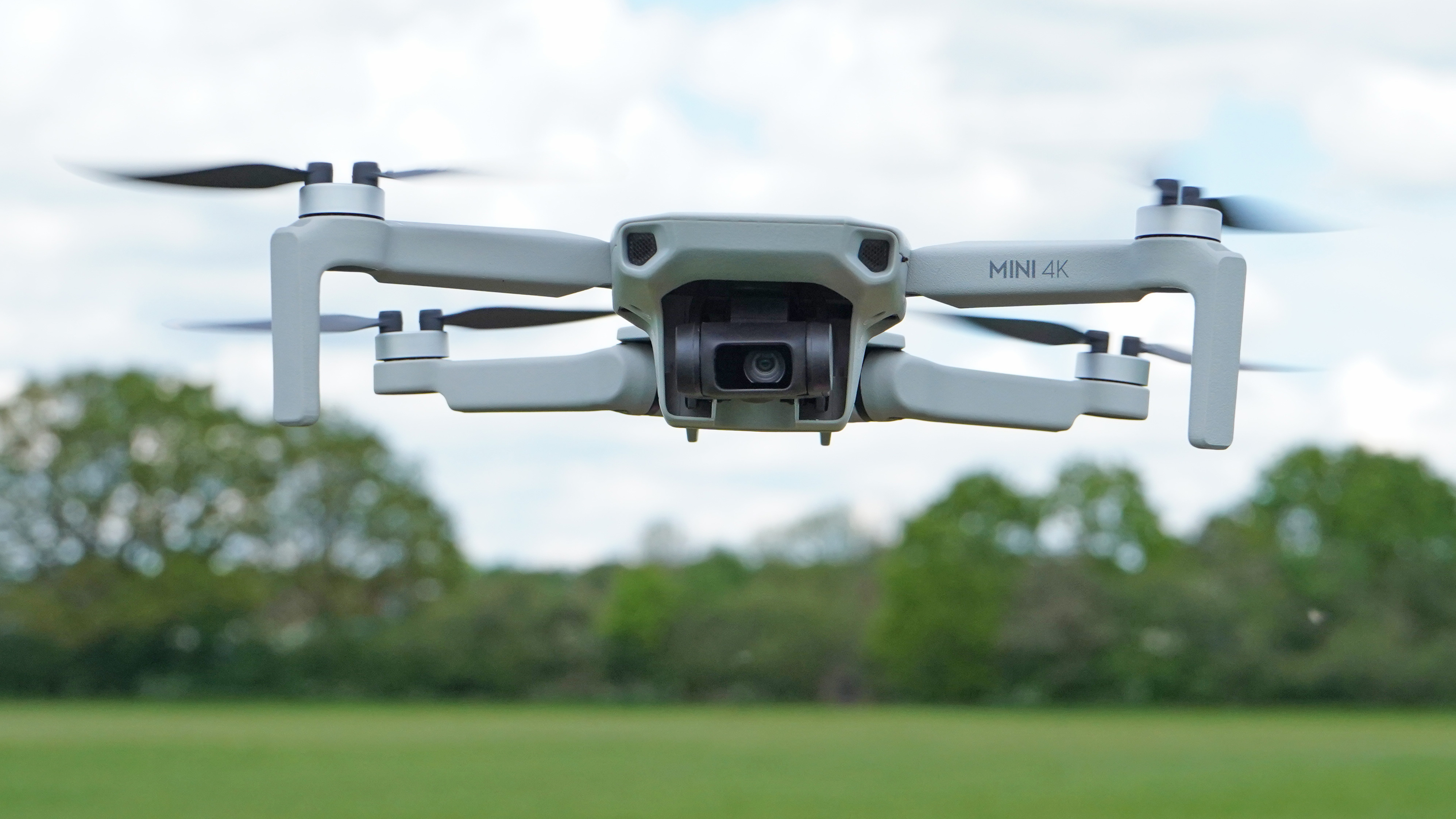
9. DJI Mini 4K
Our expert review:
Specifications
Reasons to buy
Reasons to avoid
✅ You want social media clips: This drone can produce five automatic selfies and shareable QuickShots.
✅ You want to fly outdoors: The Mini 4K will survive Level 5 winds.
❌ You want pro features: This is a 4K drone, but the OS is paired down so there is some compromise when it comes to extra features.
❌ You need collision sensors: What appear to be sensors are merely vents.
The DJI Mini 4K effectively replaces the DJI Mini 2 SE as the cheapest 'normal' drone in the range (the DJI Neo is a whole other thing!) It can be compared to a mid-range phone in terms of specs; good but not amazing. That, though, is a high standard these days, certainly far higher than toy drones and their shaky video because this drone can hover perfectly thanks to its onboard sensors and has a 3-axis mechanical stabilizer for its camera.
The main gripe tech fans had about DJI's previous low-cost option was that it had lower resolution video, but the era of 2.7K is over – a 4K camera is here. Or, more accurately, the same sensor is connected to better processing so you can get the now-expected standard of video.
The drone scrapes in beneath the 250g registration barrier, like the other 'Mini' drones, and has a folding design with propellers that fold out in use. That makes it easy to transport and relatively safe. Software-wise the app is intuitive and includes auto land, return to home, and some cool orbiting effects which will be sure to earn likes. It also has a basic tutorial in the app.
Incidentally, though there is a remote control (and a well built one that will keep your phone charged up), you will need a phone – Android or Apple. That's because it serves as screen. Video & photos is stored on a MicroSD card so you can download directly to a computer – that's how I use it – but there is also the option of Wi-Fi, albeit not super fast.
This drone's frame has a lot of history – The Mini SE, Mini 2 SE and the (non-budget) Mini 2 before that all had more or less the same airframe, though the inner electronics have changed a few times, as have the controllers. It is simple and reliable, with nearly half an hour of useable flight time.
Read more: DJI Mini 4K review
Best drone for photographers
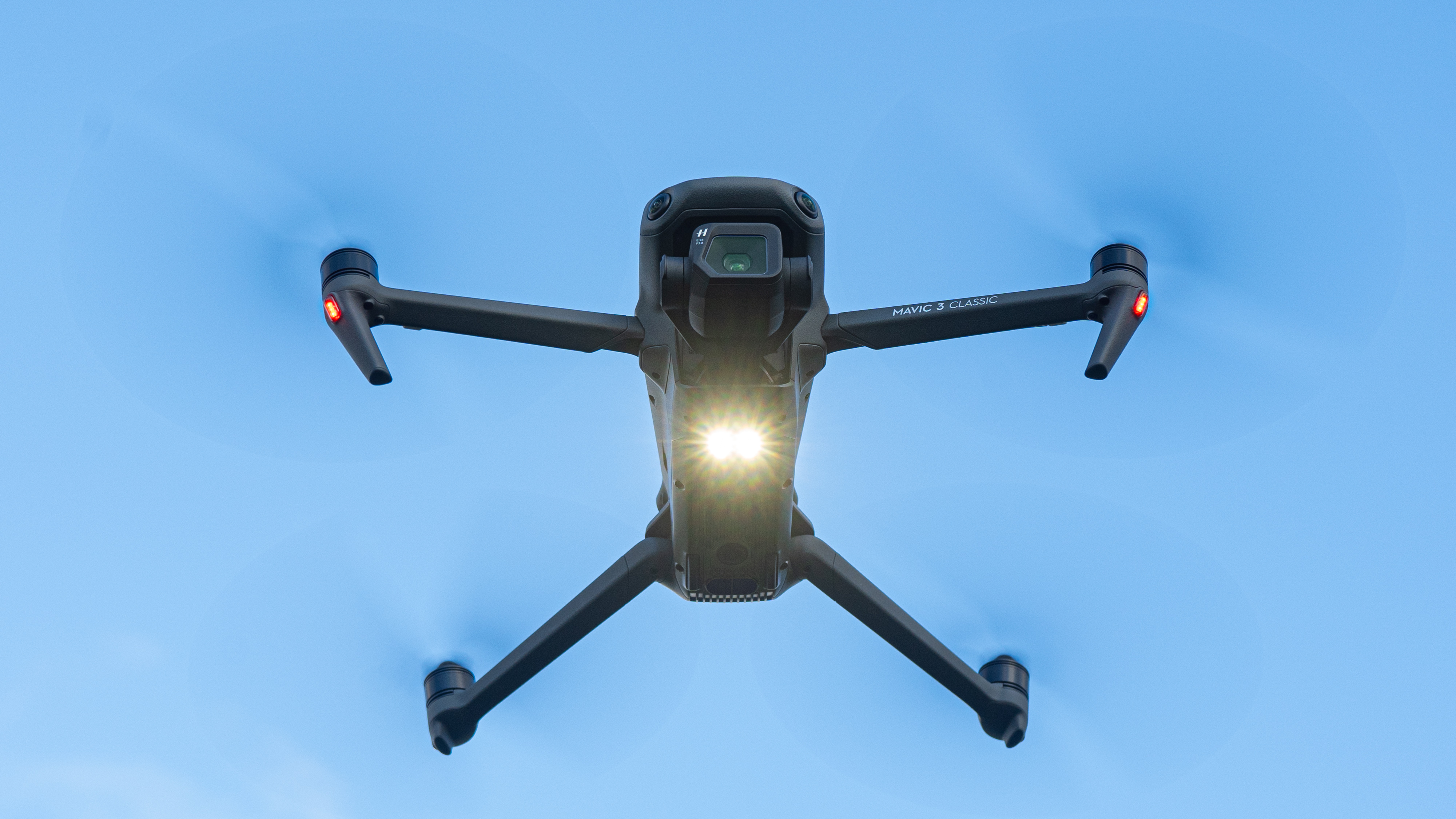
10. DJI Mavic 3 Classic
Our expert review:
Specifications
Reasons to buy
Reasons to avoid
✅ You have no use for tele lenses: The 4/3 camera is the best on a folding drone, and this drone gives you that for the lowest investment.
✅ You want DJI's best software: All the obstacle avoidance and subject tracking tools you could need.
❌ You want to keep options open: It isn't that much more money for the Mavic 3 Pro, which boasts the extra cameras.
❌ You want a small drone: The Mavic 3 isn't especially small and light, and you'll need to register to fly it.
The Mavic 3 is a powerful machine and priced accordingly, but while its ‘hybrid zoom’ is a handy tool for surveying, it isn’t a feature that will excite a lot of photographers. This Classic version ditches the relatively low-resolution zoom camera and retains the 4/3 Hasselblad camera on more or less the same airframe (including C1 certification). 10-bit D-log and all the low-light benefits of the large sensor are retained.
That means creators who would only have used the 24mm EFL camera can pay a little less to get the 15km range, advanced return to home (avoiding and re-routing around objects), and the excellent battery life of the Mavic 3 without really losing out. In fact, compared to the original’s launch, there are some advantages – the subject tracking, panorama capture, and other functions are all working from day one, and are pretty high-end.
However, it's worth noting that the Mavic 3 Pro emerged, improving some of the complaints about the Mavic 3, after the Classic's launch and personally – having flown all three – I would do my level best to buy the version with all the cameras if I could; after all the price difference isn't that much when you're already spending this much and it's better to have options, isn't it? (OK, it is – the difference is more than the price of a DJI Mini 3, but you still have to be very confident that you only need the wide which, in fairness, is true of many videomakers and surveyors. It's your call.
Read more: DJI Mavic 3 Classic review
How to choose the best camera drone
GPS:
Toy drones usually don’t feature GPS, but if you’re composing photos it’s nigh-on essential. The positioning technology was developed with guided missiles in mind, so ideal for drones. Unlike a missile, though, the aim is to stay very much in the same place, rather than be pushed away by the breeze. Not only is piloting easier, but it enables an automatic return to the take-off point should the drone lose contact with the pilot, a useful backup.
Controller:
Not all controllers are created equal. Most feature the twin sticks but at the lower end, they’ll use standard Wi-Fi with a range of around 100m control and video feedback with a clear line of sight. Higher-end drones (everything on this list) make use of proprietary radio systems (DJI alone have come up with names like Lightbridge, OM3, O3, O4). Their range is measured in miles, support for master & slave controllers (enabling separate pilot & camera operator), and first-person-view goggles.
Camera & gimbal:
Like any camera, sensor size and megapixels matter, but so too do the means of vibration reduction. At the lower end, cushioning or some kind of digital image stabilization works, but the best systems used motorized gimbals to steady and level the camera on 2- or 3-axis.
Battery:
Battery capacity is the key limit in flying drones. Higher capacities don’t always make for longer flight times since overall weight (not least the battery’s) and efficiency are a factor. The much more useful measure is simply minutes of flight time. Lithium batteries store a lot of power, but “Intelligent Batteries” are safer and include built-in monitors so you can easily check their charge. Drones are at their most efficient when flying forward at an average speed, so right out of the gate, you should assume the hover time for each drone is a little less than the given flight time. Maneuvers draw more power too
The app:
The quality of the manufacturer’s free app is a big part of the experience, since many features, especially on higher-end drones, will require you to dig down through menus. Taking the camera beyond auto is certainly done this way. Cunning developers have also found ways to use the drone sensors and the app’s processing abilities to create easier flying modes and awesome visual effects like DJI’s Tiny Planet selfie clip, just one of the “Quickshot” options.
The bundle:
A lot of drones are sold on their own, with a controller, or with a kit that includes things like spare propellers, extra batteries, ND filters, and a bag. Spare propellers, well, sad to say but you’ll probably need these early on. Batteries are expensive, and it can be a long walk to charge them from where you use them, so these should be seriously considered a factor in the price of a bundle. A well-designed bag can protect all of these (even if you just stuff it inside your preferred bag). Don’t forget, too, that you can’t just get ND filters to fit most drones – the gimbals tend to have one-off lens mounts, all worth bearing in mind.
How we test drones
🕰 Our drone expert has flown 100s of drones
💻 Drone testers who have worked as professional pilots
👪 We test drones with kids and adults (where appropriate)
🌄 Unlike some tech sites, we understand photographers and their needs
Our drone tests are carried our in the field, allowing us to assess the quadcopter for its flight performance, easy of use, and its image quality. All our drone reviews are overseen by Adam Juniper, who is one of the UK's leading experts on drones, and has written several books on flying drones, including The Drone Pilot's Handbook. He ensures that the tests – most of which he does himself – cover any notable features thoroughly in real-world scenarios.
That means, especially, take-off, landing, flying at speed, negotiating tight turns, flying toward obstacles to see if the AI avoids them (low-resolution sensors might not see tree leaves, for example), and following subjects at different speeds to test AI tracking.
Because families like drones too, we also have kids offer their input when we are testing family-friendly drones.
Find out more about how we test and review on Digital Camera World
Get the Digital Camera World Newsletter
The best camera deals, reviews, product advice, and unmissable photography news, direct to your inbox!

With over 20 years of expertise as a tech journalist, Adam brings a wealth of knowledge across a vast number of product categories, including timelapse cameras, home security cameras, NVR cameras, photography books, webcams, 3D printers and 3D scanners, borescopes, radar detectors… and, above all, drones.
Adam is our resident expert on all aspects of camera drones and drone photography, from buying guides on the best choices for aerial photographers of all ability levels to the latest rules and regulations on piloting drones.
He is the author of a number of books including The Complete Guide to Drones, The Smart Smart Home Handbook, 101 Tips for DSLR Video and The Drone Pilot's Handbook.